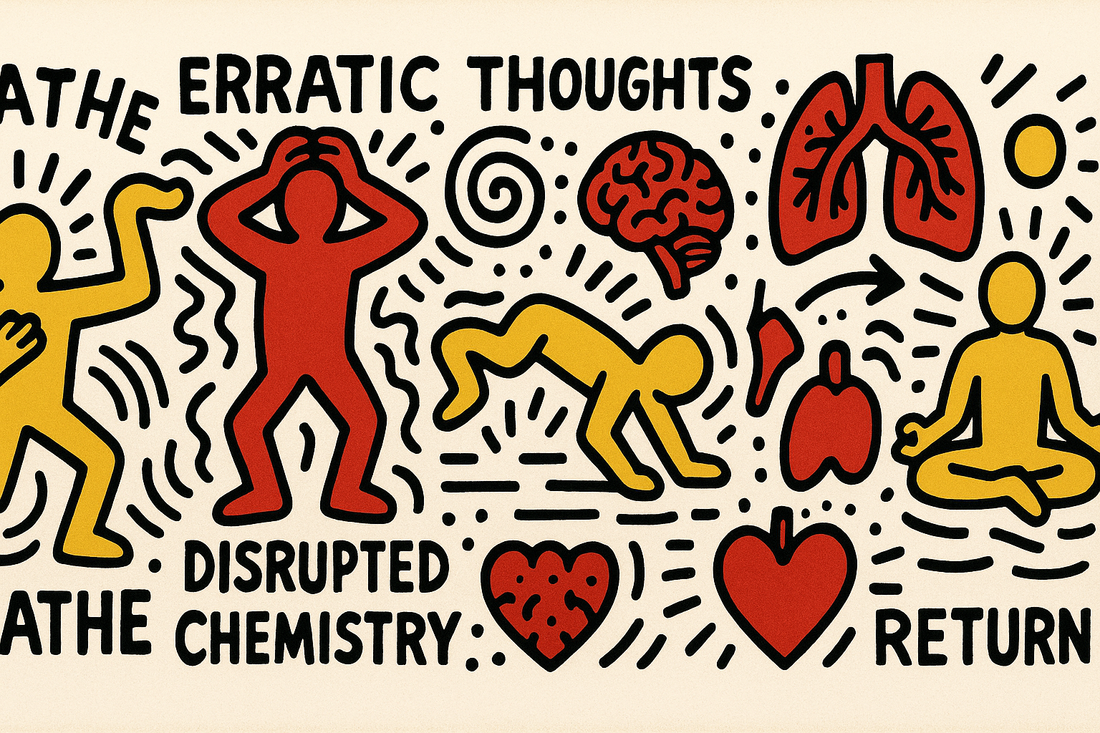If we are not feeling our best—if there’s tension, fear, sadness, anger, or dullness—it almost always means that something is erratic in our breathing.
Erratic breath equals erratic thoughts. Erratic thoughts disrupt our chemistry. And disrupted chemistry scrambles our breath again. One feeds the other in a closed loop: breath affects thought, thought affects chemistry, chemistry disturbs the breath—and around we go. This is the loop of suffering.
We cannot simply command the mind to be calm. We cannot reach into our bloodstream and reprogram our hormones on command. We can't manually squeeze serotonin into the brain or scrub cortisol from the body. But we can breathe.
We can always breathe.
If deep breaths don’t help, focus on long, slow exhalations.
If that doesn’t help, practice breath retention.
If that still doesn’t help, invert your body.
Do push-ups. Do dips. Move. Write the word “breathe” everywhere. Tattoo it into your day. Then—breathe again.
When the fire of the mind cools, when judgment pauses, when you are relaxed again, the breath becomes steady. The body shifts into the parasympathetic nervous system. The heart rate slows. The war ends. Peace returns.
And then… it begins again.
You’ll swing back into the sympathetic nervous system. The loop may restart. That’s okay.
Fix the breath again. Fix the chemistry. Ease the thoughts. Calm the body. Return to the breath.
Over time, the fluctuations lessen.
We begin to hold the parasympathetic state longer.
We stay calm longer.
We become free.
